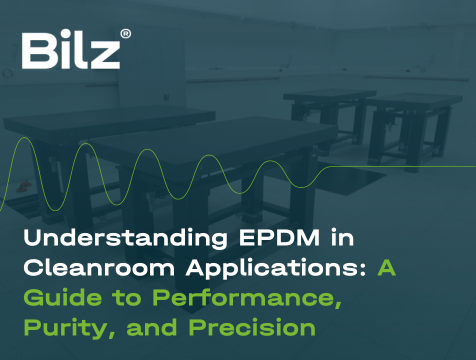

In the world of controlled environments, precision and purity are everything. Cleanrooms—used in sectors such as pharmaceuticals, electronics, medical device manufacturing, aerospace, and biotechnology—require materials that not only meet stringent regulatory standards but also maintain consistent performance over time. One such material is EPDM (Ethylene Propylene Diene Monomer), a synthetic rubber known for its resistance to heat, weathering, ozone, and chemicals.
In this blog, we explore what makes EPDM a preferred material in cleanroom environments, its applications, and how our offerings align with the highest standards of quality and compliance.
EPDM is a synthetic elastomer made from ethylene, propylene, and a diene monomer. It is widely used in industrial applications due to its:
Its non-polar nature also makes it resistant to many types of contamination, making it a suitable candidate for cleanroom environments where cleanliness is paramount.
While EPDM is a durable and versatile material, not all EPDM is suitable for cleanroom use. For cleanroom applications, the material must meet strict standards of chemical purity, outgassing performance, and particle generation.
Our cleanroom-compatible EPDM comes from a trusted German supplier and meets certification requirements for ultra-low contamination levels. The material is available in black, which is industry-standard for most cleanroom gaskets, seals, and vibration isolation components.
EPDM is commonly used in cleanrooms for:
Its chemical resistance and flexibility make EPDM a preferred material for maintaining seal integrity over time—even in highly sanitized or high-temperature environments.
We provide certified EPDM designed for cleanroom applications, available in the following standard thicknesses:
Whether you need thin gasketing material for precision sealing or thicker vibration-damping pads, we can deliver a solution that aligns with your requirements. Each thickness is available in high-purity black EPDM, sourced from a reputable German manufacturer with cleanroom certifications.
Whether you’re building a new facility or upgrading your existing environment, our cleanroom-grade EPDM products offer the durability and purity your operations demand.
Contact us today to request a sample or to discuss custom solutions for your cleanroom needs.
Take the first step toward stability and precision—contact us today! Our experts are ready to help you find the perfect vibration isolation solution for your unique needs.For more information or to discuss your specific requirements, reach out to us at bilz-usa.com/contact/